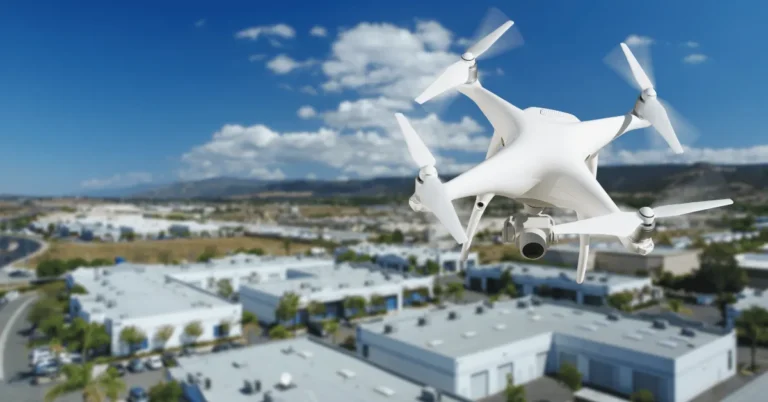Can POLICE Drones SEE in Your House? (May Be, Yes)

Imagine this: you’re sitting in your living room, minding your own business, when suddenly you hear a strange buzzing sound outside your window. You peek out and see a police drone hovering in the sky, its camera pointed directly at your house. Panic sets in as you wonder, can police drones see in your house?
What police drones are capable of?
Police drones are versatile tools with a wide range of capabilities that enhance law enforcement efforts. One key function is surveillance, thanks to high-definition cameras capturing clear footage of large areas, allowing real-time situational awareness.
Zoom capabilities enable close-up observations, while night vision and thermal imaging assist in low-light conditions and suspect identification through heat signatures.
Facial recognition and license plate recognition add further dimensions to real-time identification and tracking of individuals and vehicles.
Search and rescue
In Search and Rescue missions, police drones shine by rapidly covering large areas to locate missing persons or evidence in disaster zones.
They can operate in dangerous or inaccessible areas, reaching spots impractical for officers on foot.
Equipped with searchlights and infrared cameras, these drones are invaluable in searching for people in darkness or dense foliage.
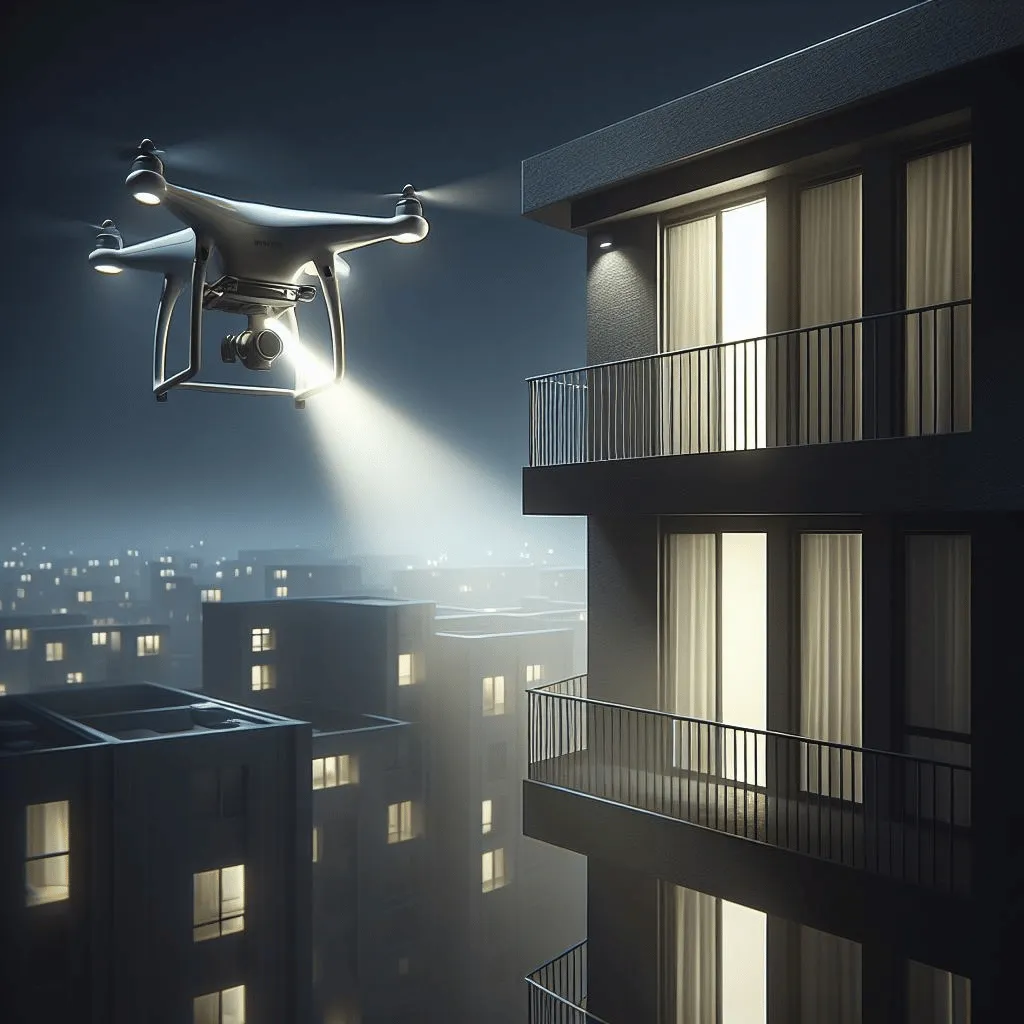
Crowd control
For Crowd Control, police drones monitor large gatherings, offering real-time insights into crowd size and movement to prevent violence and maintain order.
They can swiftly identify potential threats, detect suspicious behavior or objects, and even communicate warnings or instructions to specific individuals or areas within the crowd.
Other roles
Beyond these roles, police drones are adept at traffic enforcement, monitoring traffic flow, identifying violations, and issuing citations.
In crime scene investigations, they document scenes from above, providing valuable evidence for investigators. Moreover, they contribute to public safety by monitoring events, deterring crime, and responding to emergencies.
It’s essential to recognize that the specific capabilities of a police drone depend on its model and equipment.
However, all police drones share a common ability to offer an aerial perspective and real-time information, enhancing situational awareness and assisting law enforcement officers in performing their duties more effectively.
Read More: Can Drones See Through Walls? (Is It Possible?)
Can police drones see in your house?
Whether police drones can see inside your house depends on several factors, including the type of drone, its equipment, and your home’s features. Here’s a breakdown:
Current capabilities:
Limited visibility: Most police drones use standard cameras with limited zoom capabilities. This means they can see general activity in your yard or outside your windows, but they cannot clearly see specific details inside your home unless they are very close.
Opaque surfaces: Walls, windows, and other opaque surfaces block the view of most drone cameras. They cannot see through these barriers unless they are equipped with advanced technology.

Legal restrictions: Police are bound by laws and regulations regarding drone use. They cannot intentionally peek into your home without a warrant or probable cause.
Future advancements:
Technology progression: Drone technology is constantly evolving, and future models may have increased zoom capabilities, night vision, or even the ability to see through walls. However, these advancements are still under development and are not widely available in police drones yet.
Legal implications: The use of advanced drone technology for surveillance raises ethical and privacy concerns. Laws and regulations will need to adapt to address these concerns and ensure responsible drone use by law enforcement.
Protecting your privacy:
Window coverings: Using curtains, blinds, or other window coverings can help block the view into your home from drones.
Limited outdoor activity: If you’re concerned about privacy, you may want to limit your outdoor activities that are visible from above.
Contacting authorities: If you feel your privacy is being violated by a drone, you can contact your local authorities to report the incident.
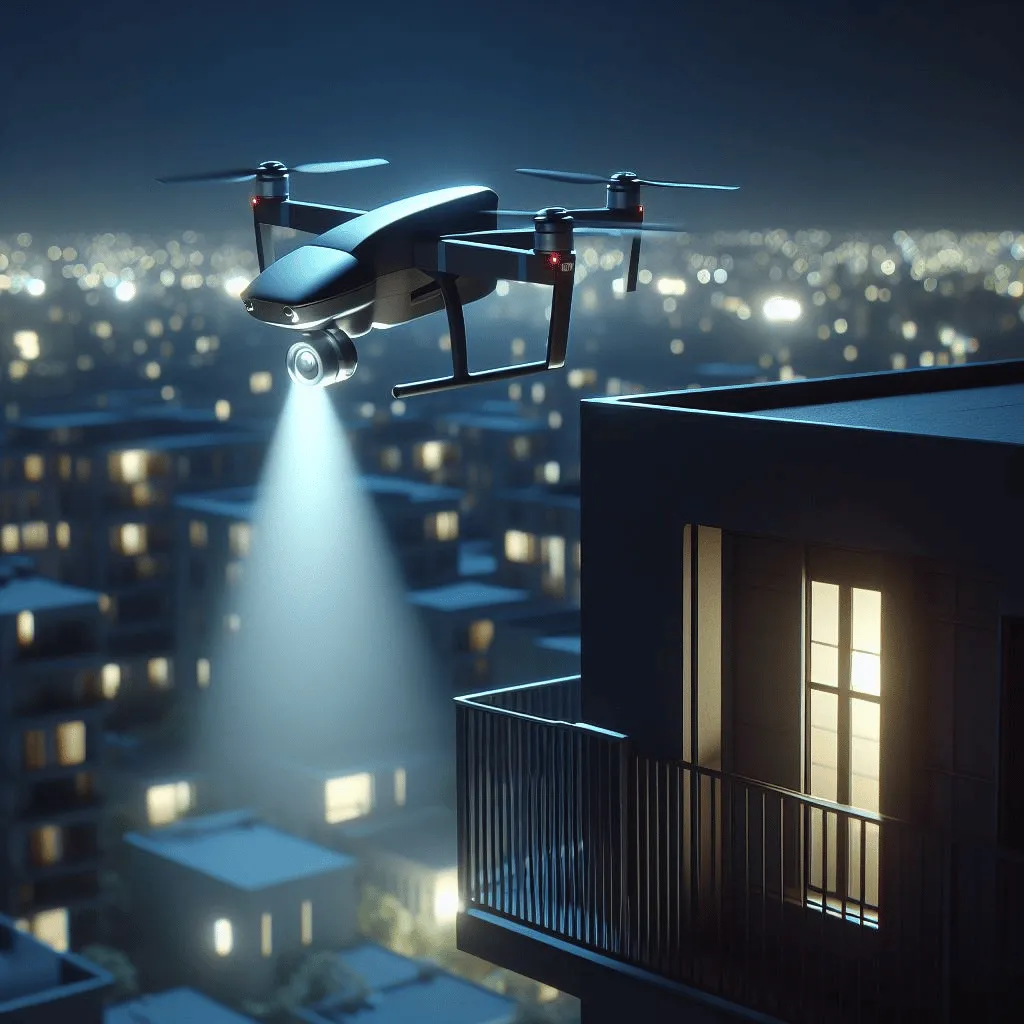
While police drones have the potential to see into your house under certain circumstances, the technology currently used by law enforcement has limitations.
Additionally, legal restrictions are in place to protect your privacy. As drone technology advances, it’s important to be aware of potential privacy concerns and take steps to protect yourself.
Read More: How to Spot a Police Drone at Night? (Is It Possible or Not? 2024)
Can a police drone hear inside your house?
The ability of a police drone to hear inside your house is a complex issue with no simple answer. Here’s what we know:
Current limitations:
Microphone technology: Police drones typically have limited audio recording capabilities. While they can pick up nearby sounds, their microphones are not powerful enough to clearly hear conversations inside a house unless they are very close to an open window.
Background noise: Drones generate significant noise from their propellers, making it difficult to hear anything faintly audible indoors.
Distance: Sound diminishes significantly with distance, further reducing the ability to hear conversations from a drone hovering outside.
Future advancements:
Directed microphones: Advancements in microphone technology could allow drones to capture specific sounds over a longer distance. However, these technologies are not yet widely used in law enforcement.
Audio enhancement: Software can be used to enhance audio recordings, potentially making it easier to hear faint sounds.

Legal restrictions:
Privacy laws: Just like with visual surveillance, police are bound by laws regarding audio recording. They cannot eavesdrop on private conversations without a warrant or probable cause.
Protecting your privacy:
Soundproofing: Soundproofing your windows can help reduce the amount of noise that reaches the outside.
White noise machines: Using white noise machines can mask conversations and make it more difficult to hear them from outside.
Limited conversation near open windows: Be mindful of what you say near open windows if you are concerned about privacy.
So,
While it is theoretically possible for a police drone to hear sounds inside your house under certain circumstances, the current technology and legal limitations make it difficult and unlikely in most cases.
However, as technology advances, it’s important to be aware of potential privacy concerns and take steps to protect yourself.
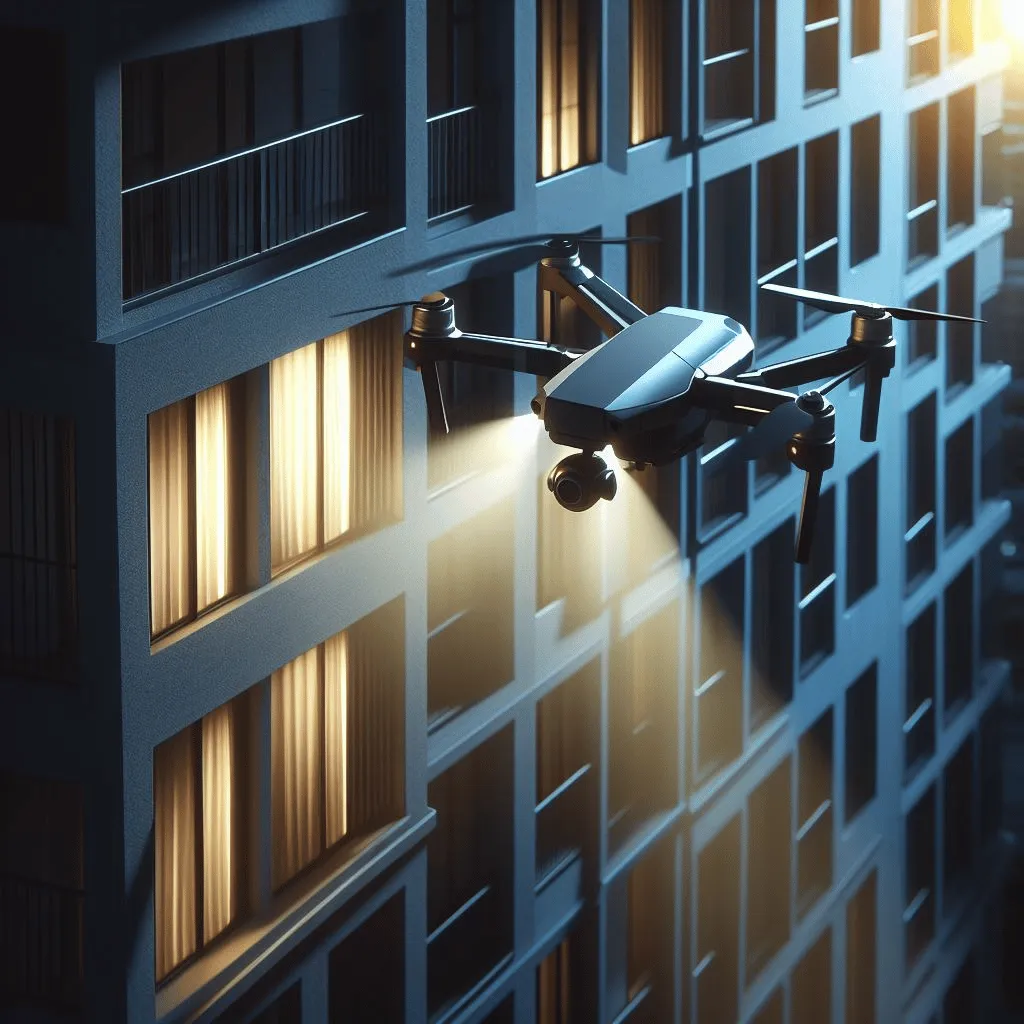
Read More: Do Drones Have Night Vision Cameras?
What do police drones detect?
Police drones are equipped with various sensors that allow them to detect a diverse range of information, some of which include:
Visual:
High-resolution cameras: These capture clear images and videos of large areas in real-time, providing situational awareness and aiding in suspect identification, evidence gathering, and crowd monitoring.
Zoom capabilities: Allow for close-up observations of individuals and objects, facilitating identification and gathering details relevant to investigations.
Night vision: Enables operation in low-light conditions, making them valuable tools for nighttime surveillance, search and rescue missions, and crime scene investigation.
Thermal imaging: Can detect heat signatures, helping to locate missing persons, identify individuals in darkness or hiding, and track the movement of suspects.
Facial recognition: Advanced technology allows drones to scan faces and compare them to databases, facilitating identification of individuals in real-time.
License plate recognition: Can automatically scan and identify license plates, aiding in traffic enforcement, stolen vehicle recovery, and suspect tracking.

Audio:
Microphones: While not as widely used as visual sensors, microphones can be employed to capture sounds and potentially hear conversations, although limitations in range and background noise make this challenging.
Other detection capabilities:
Radiofrequency (RF) sensors: Can detect radio signals emitted by various devices, potentially revealing their presence and location.
Chemical sensors: Can detect the presence of specific chemicals, assisting in hazardous material detection, bomb sniffing, and drug investigations.
LiDAR sensors: Use lasers to measure distances and create 3D maps of the surrounding environment, aiding in search and rescue operations, accident scene reconstruction, and infrastructure inspections.
Data analysis and integration:
Modern police drones often integrate various sensors and software to analyze collected data in real-time, providing officers with actionable insights and facilitating quick decision-making. This can include:
Overall, police drones serve as powerful tools for law enforcement, enhancing their ability to detect, monitor, and respond to various situations, ranging from routine surveillance to complex investigations and emergency response.

Read More: Can You Fly a Drone in Your House?
How much police drones can see at night and what they can see like building, homes or nothing?
Police drones have various capabilities for night vision, enabling them to see in low-light conditions to varying degrees. However, their ability to see and what they can see depends on different factors:
Factors influencing night vision:
General night vision range:
What can they see:
Overall:
Police drones offer valuable night vision capabilities, enhancing their effectiveness in various situations like search and rescue, crime scene investigation, and crowd control.
However, their range and ability to see details are limited by technological factors, environmental conditions, and legal restrictions.

Can police drones see through walls, curtains, or glass?
Whether police drones can see through walls, curtains, or glass depends on the specific drone technology used and the materials involved. Here’s a breakdown:
Walls:
Standard walls: No, police drones cannot see through standard walls made of wood, brick, or concrete. Their sensors, even with night vision or thermal imaging, cannot penetrate these materials.
Thin walls or drywall: In some cases, drones with advanced sensors might be able to detect heat signatures or other subtle differences through thin walls or drywall. However, this capability is still under development and not widely used by law enforcement.
Curtains:
Translucent curtains: If the curtains are thin and translucent, the drone’s camera might be able to see vague outlines of objects or movement inside.
Opaque curtains: Drones cannot see through opaque curtains that block light and vision.

Glass:
Clear glass: Drones can see through clear glass unless it has reflective coating or other treatments blocking visibility.
Tinted or reflective glass: Drones may have difficulty seeing through tinted or reflective glass, depending on the degree of tinting and the angle of view.
Legal and ethical considerations:
It’s important to note that even if a drone has the technological capability to see through certain materials, legal and ethical restrictions may prevent police from using it for surveillance.
In most cases, they need a warrant or probable cause before using drones for intrusive surveillance activities.
While police drones are equipped with advanced technology, they cannot see through most walls, opaque curtains, or certain types of glass.
Legal and ethical considerations also limit their use for intrusive surveillance. However, it’s always important to be aware of potential privacy concerns and take steps to protect yourself.
Can police drones see through windows or roof?
Whether police drones can see through windows or roofs depends on the specific technology used and the characteristics of the window or roof. Here’s a breakdown:
Windows:
Roofs:
While police drones can see through clear windows, their ability to see through tinted windows, reflective windows, or roofs is limited by technology, lighting conditions, and legal restrictions.
You can take steps to protect your privacy by using window coverings and being mindful of your activities in areas visible from above.
Remember, the best way to protect your privacy is to be aware of the capabilities of police drones and take steps to limit their ability to see into your home.

If you see a drone outside of your home and you detect unusual activities of that drone then what to do?
If you happen to spot a drone hovering around your home and notice anything out of the ordinary, the key is to stay calm and tackle the situation step by step.
Firstly, take a moment to observe and document the drone’s actions. Keep an eye on its flight patterns, altitude, and any peculiar activities it might be up to. Snap pictures or record videos with your phone, noting the time and date for future reference.
Next, assess the situation. Consider if the drone is also flying over your neighbor’s property or if there’s an event in the vicinity that could explain its presence.
Evaluate whether the drone’s behavior makes you feel uneasy or threatened, especially if it’s directly over your property.
If you sense a potential threat, it’s time to take action. Reach out to local authorities, such as your police department or non-emergency line.
Provide a detailed account of the drone’s activities and share the evidence you’ve collected. If you believe your privacy is being violated, you can file a complaint with the Federal Aviation Administration (FAA) or relevant authorities in your area. Legal consultation may be necessary in some cases.
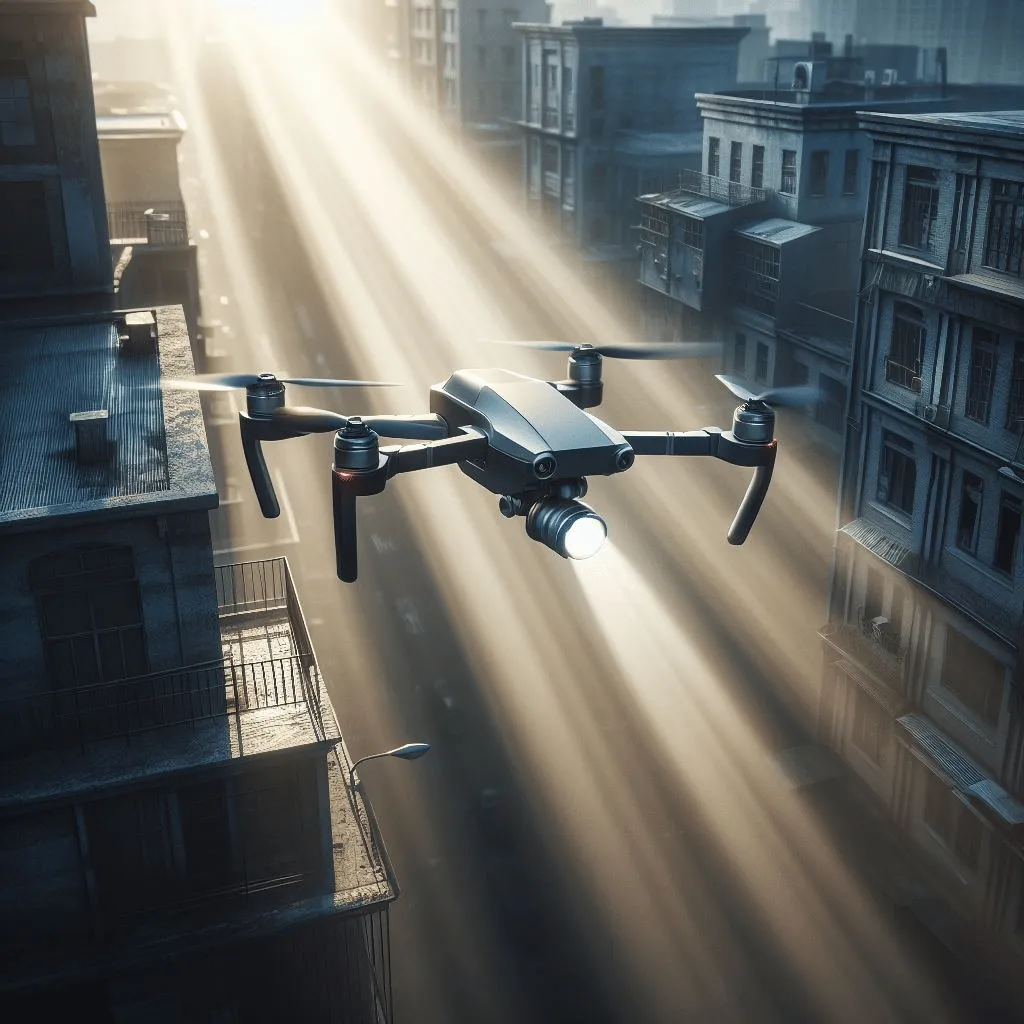
To safeguard your privacy, take practical steps like using window coverings, closing curtains or blinds, and limiting outdoor activities if you feel uncomfortable. Installing privacy screens or films on your windows can offer additional protection.
Stay informed about drone laws in your area, know your rights, and keep up with drone technology advancements. Join online forums or community groups to discuss concerns and share experiences with others facing similar situations.
By following these steps, you can regain control of the situation and protect your privacy. Always remember that your safety and privacy are crucial, and you have the right to take action if you feel threatened or violated.
Final Thoughts – Can Police Drones See in Your House?
We’ve explored the capabilities of police drones and their potential impact on privacy. While these drones offer valuable tools for law enforcement, it’s crucial to be aware of their limitations and legal boundaries.
By understanding how drones operate and taking proactive measures, you can protect your privacy and ensure the responsible use of this technology.
Here are some key takeaways:
By being proactive and aware, you can navigate the evolving landscape of drone technology and ensure it doesn’t infringe on your right to privacy. Remember, you have control over your information and the right to protect it.

FAQs
While possible, the ability of police drones to record audio from inside your house is limited by microphone technology, distance, and background noise. They typically cannot hear private conversations unless they are very close to an open window.
Advanced police drones might use facial recognition technology, but its effectiveness depends on lighting conditions, camera resolution, and the quality of the image. They cannot definitively identify you unless you are already in a facial recognition database.
Police drones can generally fly over private property as long as they comply with FAA regulations, including maintaining a safe distance and altitude. However, they cannot intentionally violate your privacy without a warrant or probable cause.
There are currently no widely available tools for tracking police drone activity. However, you can stay informed by checking your local police department website or news outlets for announcements regarding drone deployments.
If you feel a drone is invading your privacy, document the incident, including date, time, and location. You can then contact your local authorities and file a privacy complaint with the FAA or relevant authorities.
Article Sources:


